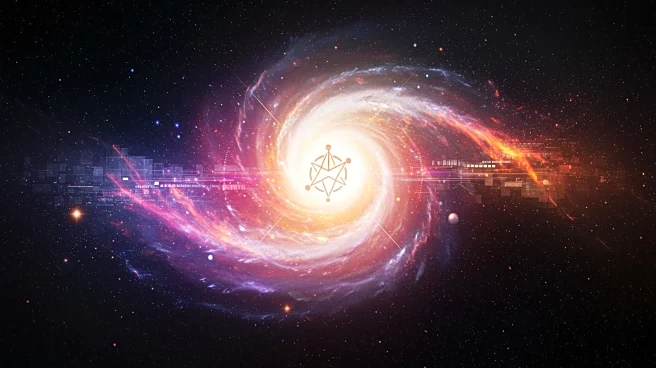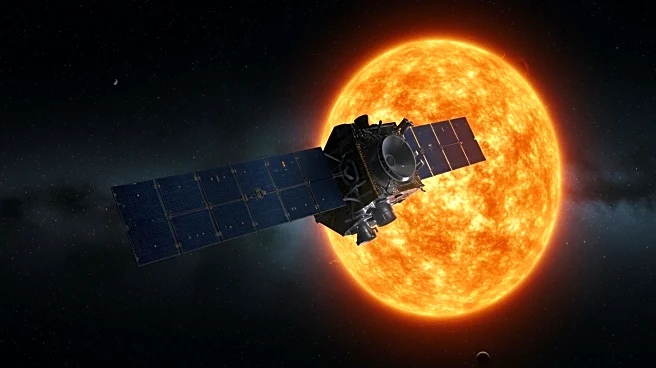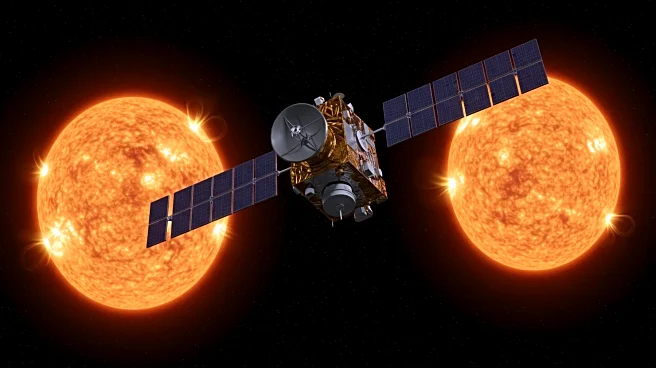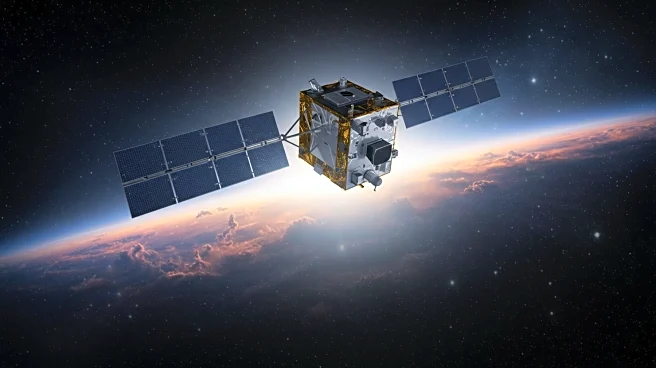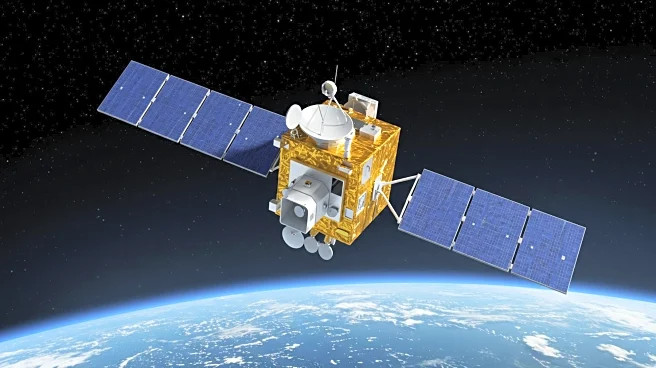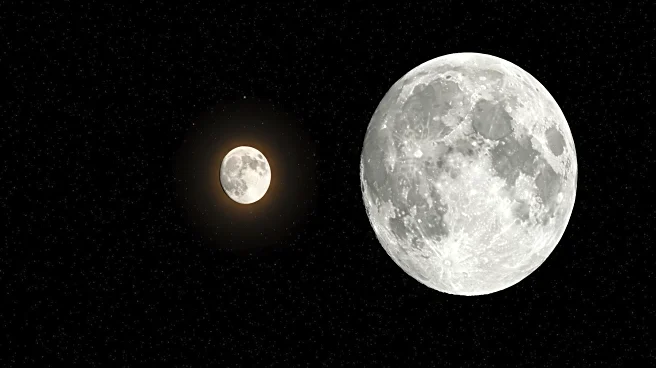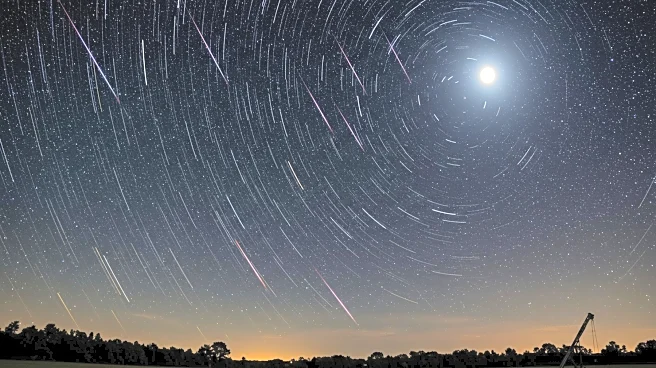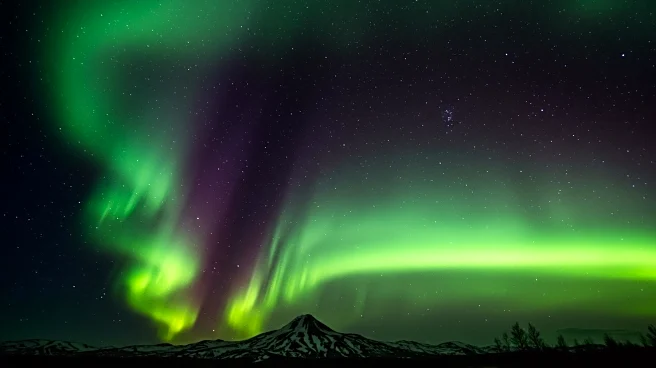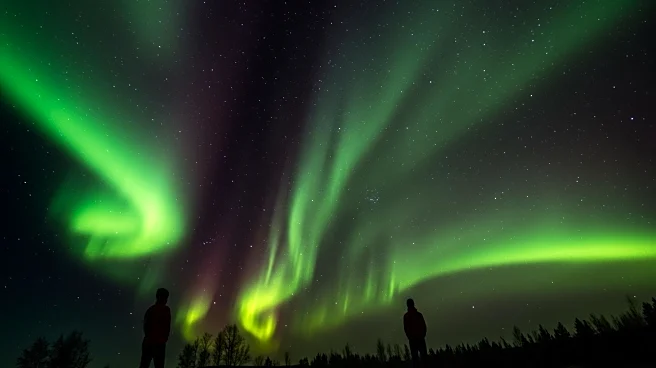What's Happening?
Recent research has revealed the existence of space hurricanes, cyclones of charged particles that form above the North Pole, affecting Earth's geomagnetic field and infrastructure in orbit. These storms, which occur more frequently than previously thought, are created by rapid transfers of solar wind energy into Earth's upper atmosphere, leading to vibrant auroras. Unlike typical geomagnetic storms, space hurricanes form when the interplanetary magnetic field aligns northward, making them harder to detect. The study highlights their impact on navigation systems, as they can cause ionospheric irregularities affecting GPS signals.
Why It's Important?
The discovery of space hurricanes has significant implications for space weather forecasting and navigation systems. These storms can disrupt satellite operations and affect GPS accuracy, which is crucial for various industries, including aviation and maritime navigation. Understanding space hurricanes can lead to improved forecasting models, potentially reducing the risk of disruptions. The findings challenge existing models that focus on southward-tilting IMF as storm drivers, prompting a reevaluation of space weather impacts on near-Earth environments.
What's Next?
Researchers plan to conduct further analyses of space hurricane events to assess their impacts on the polar ionospheric environment. This involves studying a larger number of events from the space hurricane database to better understand their frequency and effects. The goal is to enhance forecasting models and develop strategies to mitigate their impact on navigation systems and satellite operations.
